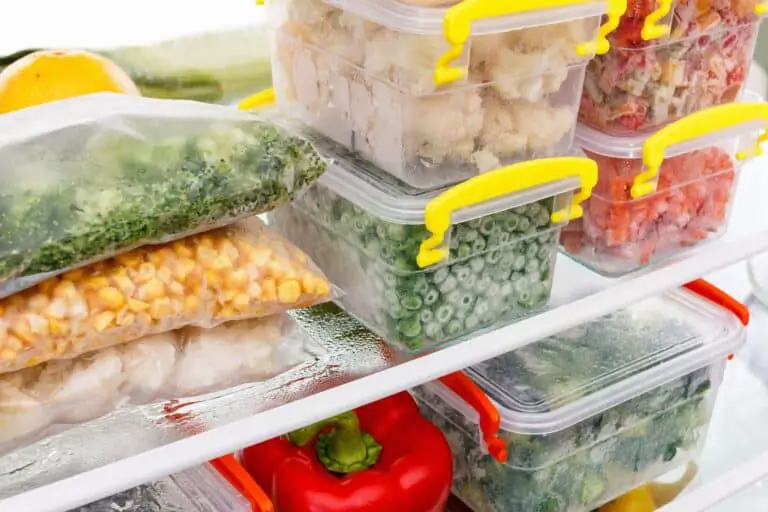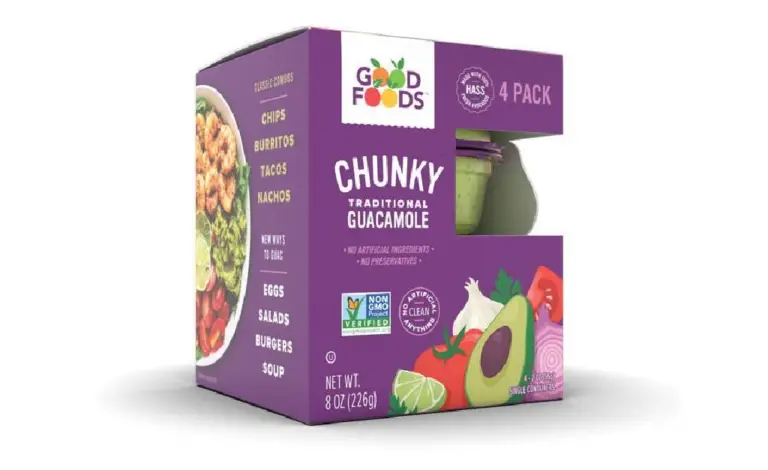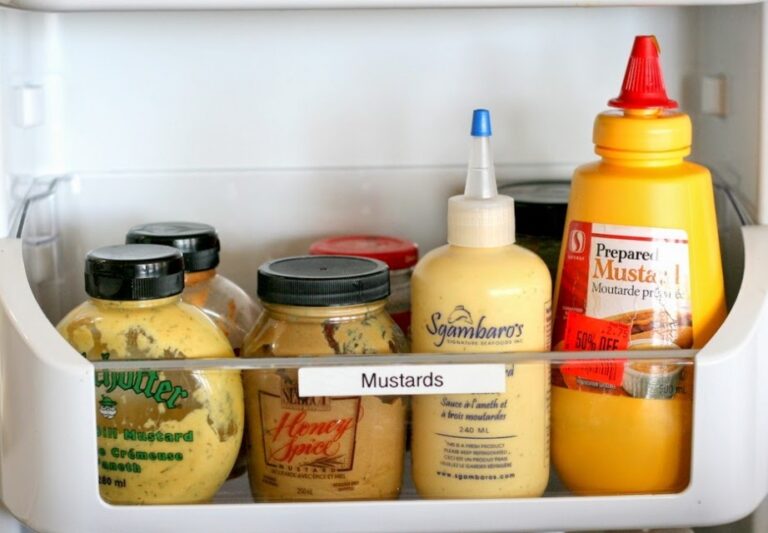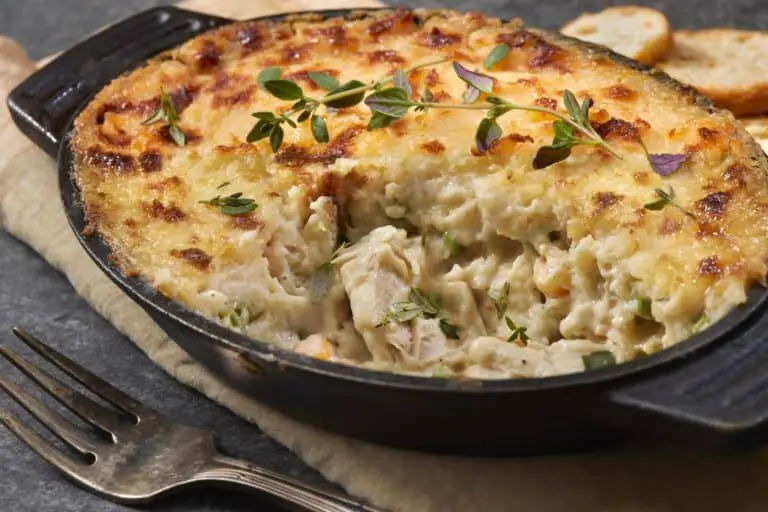Can You Eat Unopened Expired Ravioli (or Past Use-by Date)?
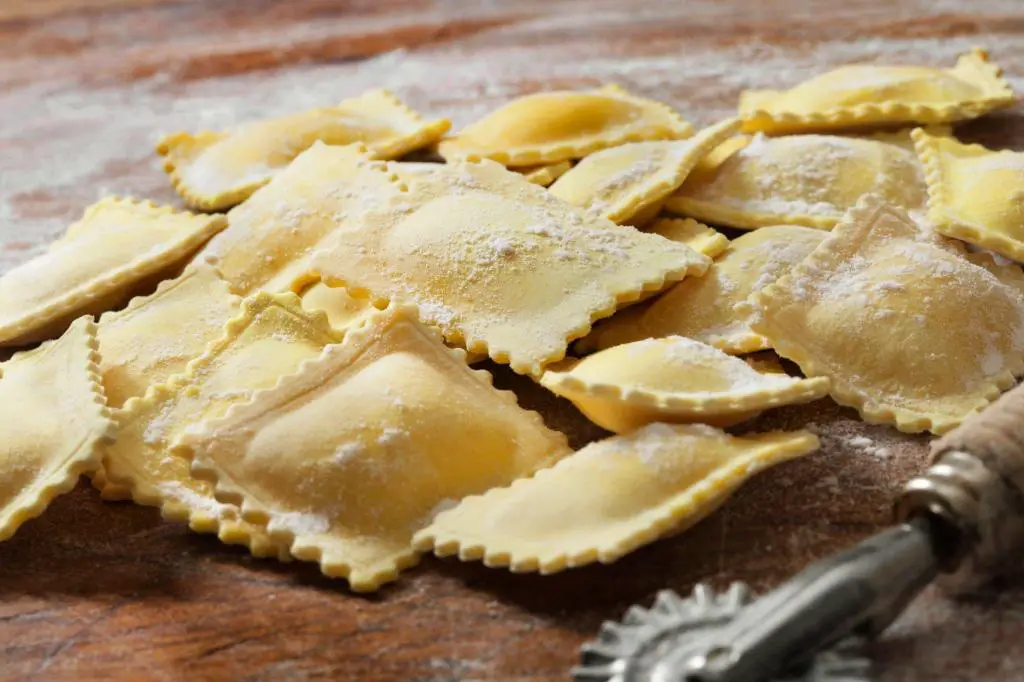
Trying something new in the kitchen often leads us to the back of our pantry, where forgotten treasures like canned ravioli await discovery. Yet, as we unearth these time-capsuled delights, a nagging question arises: Can you eat unopened expired ravioli, or is it a culinary risk not worth taking?
Unopened, expired ravioli can still be safe to eat, depending on the type of ravioli and how it has been stored.
In this guide, we unravel the mysteries behind the use-by date dilemma, exploring the nuances of consuming unopened ravioli past its prime. From understanding the shelf life of these pasta parcels to deciphering the safety implications, we navigate the terrain of expired canned food.
Join us as we delve into the science of preservation, addressing the concerns of health-conscious explorers who ponder the possibilities lurking in their pantry. Let’s explore the answers together, ensuring your culinary escapades are as safe as they are satisfying.
What Is Ravioli: Ingredients and Production Process
Ravioli, the delightful pockets of pasta filled with various savory or sweet fillings, have been a staple in Italian cuisine for centuries. The word “ravioli” is derived from the Italian verb “riavvolgere,” meaning “to wrap,” reflecting the way these delectable parcels encase their delicious contents.
Understanding the ingredients and production process of ravioli is crucial before delving into the question of whether one can consume expired ravioli.
Ingredients
The basic components of ravioli dough typically include flour, eggs, water, and salt. This simple yet versatile dough serves as the perfect vessel for an array of flavorful fillings. The filling options are vast, ranging from classic ricotta and spinach to more adventurous combinations like lobster and truffle. Each ingredient plays a crucial role in achieving the perfect balance of texture and taste.
Production Process
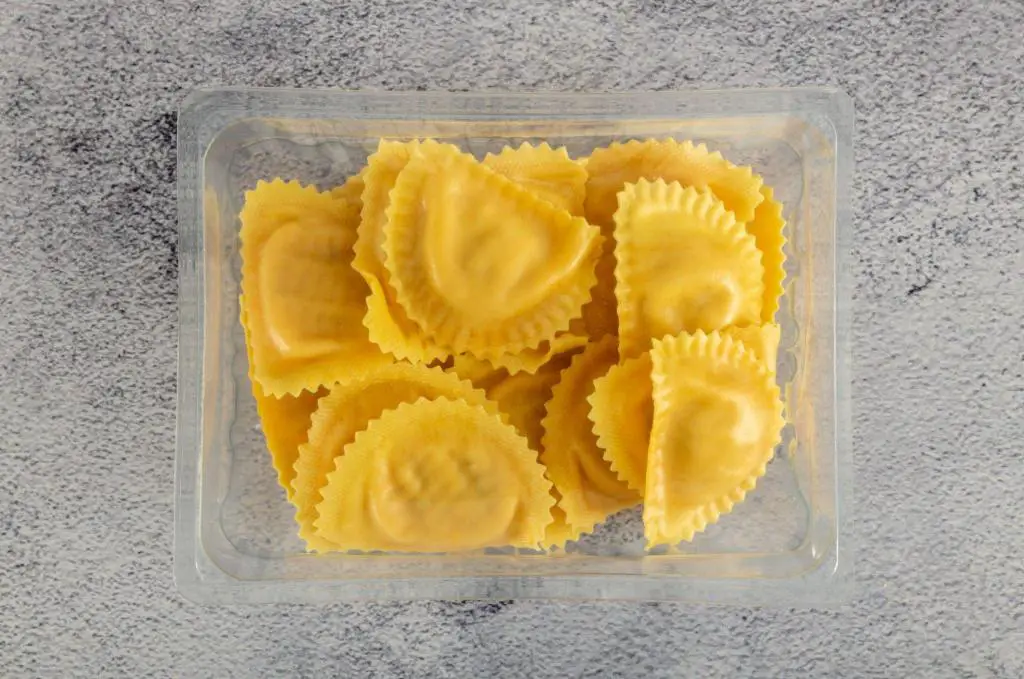
Crafting ravioli is an art that involves precision and care. The process begins with the creation of the dough, where flour is combined with eggs, water, and salt. The mixture is kneaded to form a smooth, elastic, undercooked dough. This dough is then rolled out, creating a thin sheet that will serve as the casing for the delectable filling.
The filling, carefully prepared to complement the pasta, is placed on the rolled-out dough in small, evenly spaced portions. Another layer of dough is then laid on top, and the edges are sealed to encase the filling securely. Traditional methods involve hand-crimping the edges, giving each piece a distinctive appearance.
Modern production methods may use machines to expedite the process while maintaining the same level of precision. The result is a batch of ravioli ready to be cooked to perfection.
Understanding Ravioli Expiration and Shelf Life
Ravioli, like any perishable food item, has a finite shelf life. The manufacturer provides a guideline on the packaging that frequently indicates the expiration date to guarantee the product’s best quality and safety. Understanding the factors that contribute to ravioli’s expiration is essential for making informed decisions about its consumption.
Factors Affecting Shelf Life
Several factors influence the shelf life of ravioli, including:
- Ingredients: The quality and freshness of the ingredients used in both the pasta and filling play a significant role in determining how long the ravioli will remain viable.
- Storage Conditions: Proper storage is crucial to preserving the freshness of ravioli. Storing it in a cool, dry place, away from direct sunlight and temperature fluctuations, can extend its shelf life.
- Packaging: The packaging material and method can impact the ravioli’s exposure to air and moisture, affecting its overall quality.
Shelf Life of Ravioli
On average, fresh ravioli typically have a shelf life of about 4–5 days when stored in the refrigerator. Frozen ravioli, if properly stored, can last for several months. It’s important to adhere to the recommended storage guidelines to ensure the ravioli maintains its texture and flavor.
Can You Eat Unopened, Expired Ravioli?
Now, the question arises: Can you eat unopened, expired ravioli? The answer depends on various factors, and it’s essential to approach this question with a cautious mindset.
Unopened Ravioli
If the ravioli is unopened and stored according to the recommended guidelines, it may still be safe to consume past the expiration date. However, it’s crucial to inspect the packaging for any signs of damage, such as tears or punctures, that could compromise the product’s integrity.
Here are some steps to consider:
- Check the packaging: Inspect the ravioli packaging for any visible damage. If the packaging is compromised, it’s best to err on the side of caution and discard the product.
- Smell Test: Give the unopened ravioli a sniff. If there’s a noticeable off-putting odor, it’s a clear sign that the product has gone bad and should not be consumed.
- Visual Inspection: Examine the appearance of the ravioli. Any discoloration, mold, or unusual texture is a red flag and indicates that the product is no longer safe to eat.
Expired Ravioli
If the ravioli is both expired and unopened, it’s important to take extra care. While some preserved foods may remain safe to eat past the expiration date, the quality and flavor of the ravioli may have deteriorated.
Here’s what you can do:
- Perform the Smell Test: Even if the packaging appears intact, give the ravioli a sniff. A foul or rancid odor is a clear indication that the product has surpassed its prime and should be discarded.
- Visual Inspection: Inspect the ravioli for any signs of spoilage, such as mold, discoloration, or an unusual texture. If any of these are present, it’s best not to consume the product.
- Consider the Storage Conditions: If the ravioli has been consistently stored in ideal conditions, it may have a better chance of remaining safe to eat. However, this is not a guarantee, and other factors must be taken into account.
Table: Guidelines for Unopened, Expired Ravioli
| Scenario | Action |
| Unopened, undamaged packaging | Check for off-putting odors, visual signs of spoilage. If all seems normal, a taste test can help. |
| Unopened, damaged packaging | Discard the product. |
| Expired, unopened packaging | Perform smell and visual tests. If any signs of spoilage are present, discard the product. |
Safety Concerns and Health Risks
Ravioli, those delightful pasta pockets filled with an array of scrumptious ingredients, have undoubtedly found a special place in our hearts and on our plates. But what happens when you come across a forgotten pack of ravioli in the back of your pantry, long past its use-by date?
Is it a risk to your health, or can you still savor the goodness within? Let’s delve into the safety concerns and potential health risks associated with consuming unopened, expired ravioli.
Additionally, the packaging of canned foods can deteriorate over time, potentially leading to exposure to harmful chemicals or bacteria. Even if the can appears intact, there is a possibility that the quality of its contents has been compromised. Therefore, it’s crucial to prioritize personal safety by adhering to recommended use-by dates and avoiding potential health hazards associated with consuming expired foods like unopened ravioli.
Safety Concerns
When it comes to unopened, expired ravioli, the primary safety concerns revolve around the risk of bacterial contamination and spoilage. Over time, especially beyond the indicated use-by date, the quality of the ingredients can degrade, providing an ideal environment for harmful bacteria to proliferate.
Health Risks
Consuming expired ravioli carries certain health risks, primarily related to foodborne illnesses. Bacteria such as Salmonella, E. coli, and Listeria can thrive in improperly stored or expired food, leading to symptoms like nausea, vomiting, abdominal pain, and more severe complications in some cases.
It’s essential to understand that the risk increases as the product ages beyond its use-by date. While not every expired product is automatically hazardous, the potential for contamination and diminished quality is a real concern.
Extending Ravioli’s life span
Now that we’ve addressed the safety concerns and health risks associated with unopened, expired ravioli, let’s explore ways to potentially extend the lifespan of your beloved pasta parcels. Extending the lifespan of ravioli can be a game-changer for those who want to reduce food waste and enjoy this delicious meal for longer
Proper Storage
The first line of defense against premature spoilage is proper storage. Whether your ravioli is fresh or frozen, maintaining the right conditions is key to preserving its quality.
Fresh Ravioli:
- Refrigerate promptly: Once you bring home fresh ravioli, refrigerate it promptly to slow down the growth of bacteria. Prompt refrigeration can maintain taste and texture of ravioli.
- Follow temperature guidelines: Keep the refrigerator at or below 40°F (4°C) to ensure the ravioli stays cool and fresh.
- Check expiration dates: Purchase ravioli with the furthest expiration date to maximize its freshness.
Frozen Ravioli:
- Utilize the freezer promptly: If you’re not planning to cook the frozen ravioli immediately, store it in the freezer to maintain its quality.
- Optimal freezer temperature: Set your freezer to 0°F (-18°C) or lower to preserve the texture and taste of the frozen ravioli.
- Airtight packaging: Transfer frozen ravioli to airtight containers or resealable bags to prevent freezer burn and maintain its flavor.
Practical Tips for Storage
- Avoid Temperature Fluctuations: Fluctuations in temperature can accelerate the deterioration of ravioli. Keep the storage environment consistently cool to prolong its shelf life.
- Use Airtight Containers: Whether storing fresh or cooked ravioli, use airtight containers to minimize exposure to air and moisture, preserving its texture and taste.
- Separate Portions: If you buy ravioli in bulk, consider portioning it before freezing. This makes it easier to defrost only what you need, reducing waste and ensuring optimal quality.
- Label and Date: To keep track of the storage duration, label containers with the date of purchase or preparation. This helps you adhere to recommended storage times.
- Rotate Stock: Practice the “first in, first out” approach. Consume the oldest ravioli first to prevent any items from reaching their expiration date unnoticed.
Table: Quick Guide to Extending Ravioli’s Lifespan
| Type of Ravioli | Storage Method | Storage Temperature | Additional Tips |
| Fresh | Refrigerate promptly | 32°F to 40°F (0°C to 4°C) | Check expiration dates; use airtight containers |
| Frozen | Freeze promptly | 0°F (-18°C) or lower | Use airtight containers; label and date |
Conclusion
In conclusion, the decision to eat unopened, expired ravioli involves careful consideration of various factors. While the “best by” or “use by” date provides a general guideline, it’s essential to assess the packaging, perform sensory tests, and be aware of common misconceptions about expired food.
While unopened canned goods tend to have a longer shelf life, the risks of consuming expired, sealed ravioli should not be overlooked.
Navigating the territory of consuming expired canned food demands a nuanced understanding of the potential risks. Safety when eating expired pasta hinges on adhering to guidelines for consuming expired canned goods. When contemplating the consumption of unopened expired ravioli, it’s wise to evaluate the storage conditions, the nature of the product, and any visible signs of spoilage.
Remember, your health is paramount. Make informed decisions, weigh the risks associated with the shelf life of unopened ravioli, and consider alternative options when in doubt. By following these guidelines for eating expired canned goods, you can ensure that your culinary choices align with both your palate and your well-being.
FAQs on Shelf Life of Unopened Ravioli
Can unopened expired ravioli make you sick?
Consuming ravioli past its use-by date may pose health risks due to potential bacterial growth. It’s advisable to prioritize food safety.
Are there specific storage conditions that can extend the shelf life of unopened ravioli?
Proper storage, such as keeping canned goods in a cool, dry place, can help maintain the quality of unopened ravioli and extend its shelf life.
What should I do if I’ve already consumed expired canned ravioli?
If you’ve ingested expired ravioli and experienced any adverse effects, seek medical advice. It’s crucial to monitor your health if you suspect a foodborne illness.
How long does unopened ravioli last past the use-by date?
The duration varies, but consuming unopened ravioli significantly past the use-by date is risky. It’s advisable to adhere to the recommended date for optimal safety and quality.
Are there any visible signs to determine if canned ravioli is still edible?
Look for signs like bulging, leaks, or unusual odors. If the can appears damaged, it’s safer to discard the ravioli, as these signs may indicate bacterial contamination.


